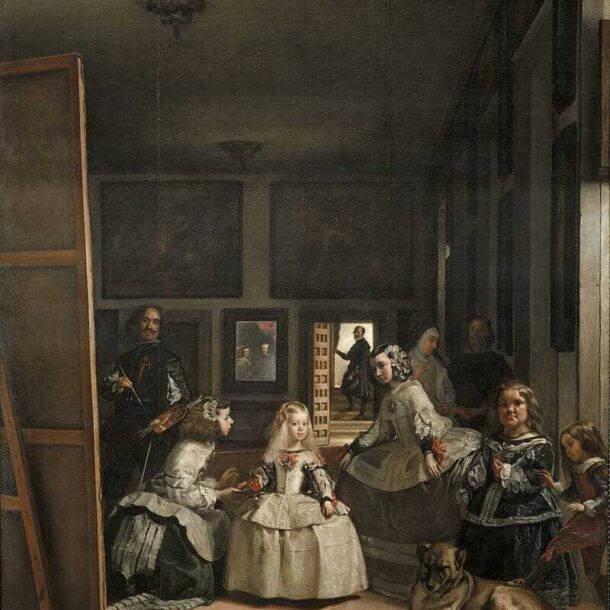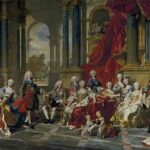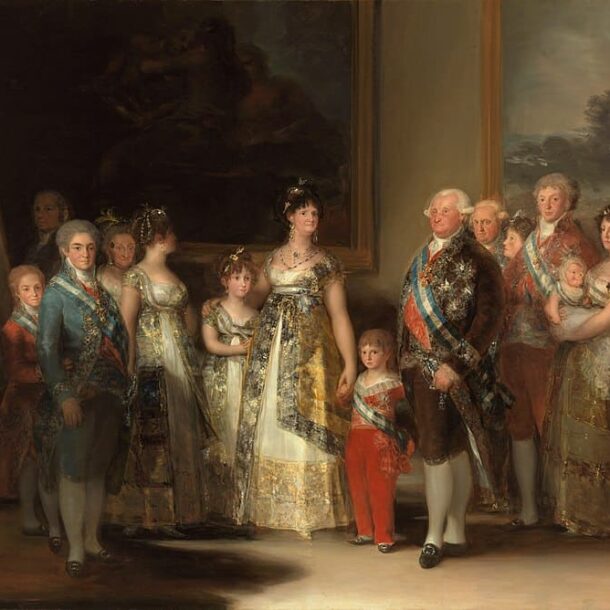
Van Loo’s work shows King Philip V with his second wife, Isabella Farnese, who appears in the centre of the composition. Alongside them are his descendants, the future Ferdinand VI (son of his first marriage to Maria Luisa Gabriela of Savoy) and Charles III, accompanied by their wives. Contrasting attitudes can be observed: the exhaustion of Philip V compared to the fullness of Isabella Farnese, the elegance of Fernando VI and the presence of the then King of Naples, Charless III. The work as a whole excludes the psychological depth of the sitters. In addition to its genealogical value, the work is reminiscent of the organisation of Dutch conversation paintings in which the family is shown as a public institution. From an artistic point of view, it marks the evolution of the French school with the apotheosis of the collective portrait and a more developed conception than the earlier paintings by Rigaud, Mignard and Largillerre.
Collection: Images
Project: 4. Family, daily life and social inequality in Europe., 5. Power and powers in the history of Europe: oligarchies, political participation and democracy.
Chronology: XVIII
Scope: Secondary Education, Baccalaureate, University
Resource type: Image
Format: Oil on canvas (408 x 520 cm)
Source: Museo Nacional del Prado (Madrid)
Language: Spanish
Date: 1743
Owner: Álvaro Romero González (Modernalia)
Identifier: P002283
Copyright: Museo del Prado (Madrid)
Abstract: Van Loo depicted the family of Philip V, the new dynasty in 18th century Spain, in this huge canvas
Image
Tags






